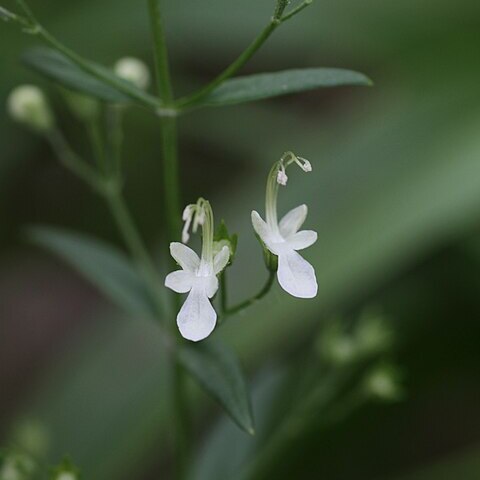Undershrub, 0.5-1.1 m high; branching from base; softly woody below, 4-angled, tomentose, hairs spreading. Leaves subsessile, drying dark brown, narrowly lanceolate to oblong-lanceolate or oblanceolate, 25-60 x 6-12 mm, base narrowly cuneate, apex obtuse to acute, margins entire or few-toothed towards apex; upper surface hispidulous; lower surface hispid and minutely gland-dotted. Inflorescence a leafy panicle, diffusely branched; flowers in 2-7-flowered pedunculate cymes, white. Calyx pubescent; teeth lanceolate-deltoid. Corolla: lower lip oblong-obovate, slightly concave, remaining 4 lobes oblong-rounded. Stamens exserted by 5-7 mm. Flowering time Nov.-Mar.
A herb or shrub.

